Regular potting soil and tap water will kill pitcher plants! Learn how to grow pitcher plants, and how to keep them happy for years!
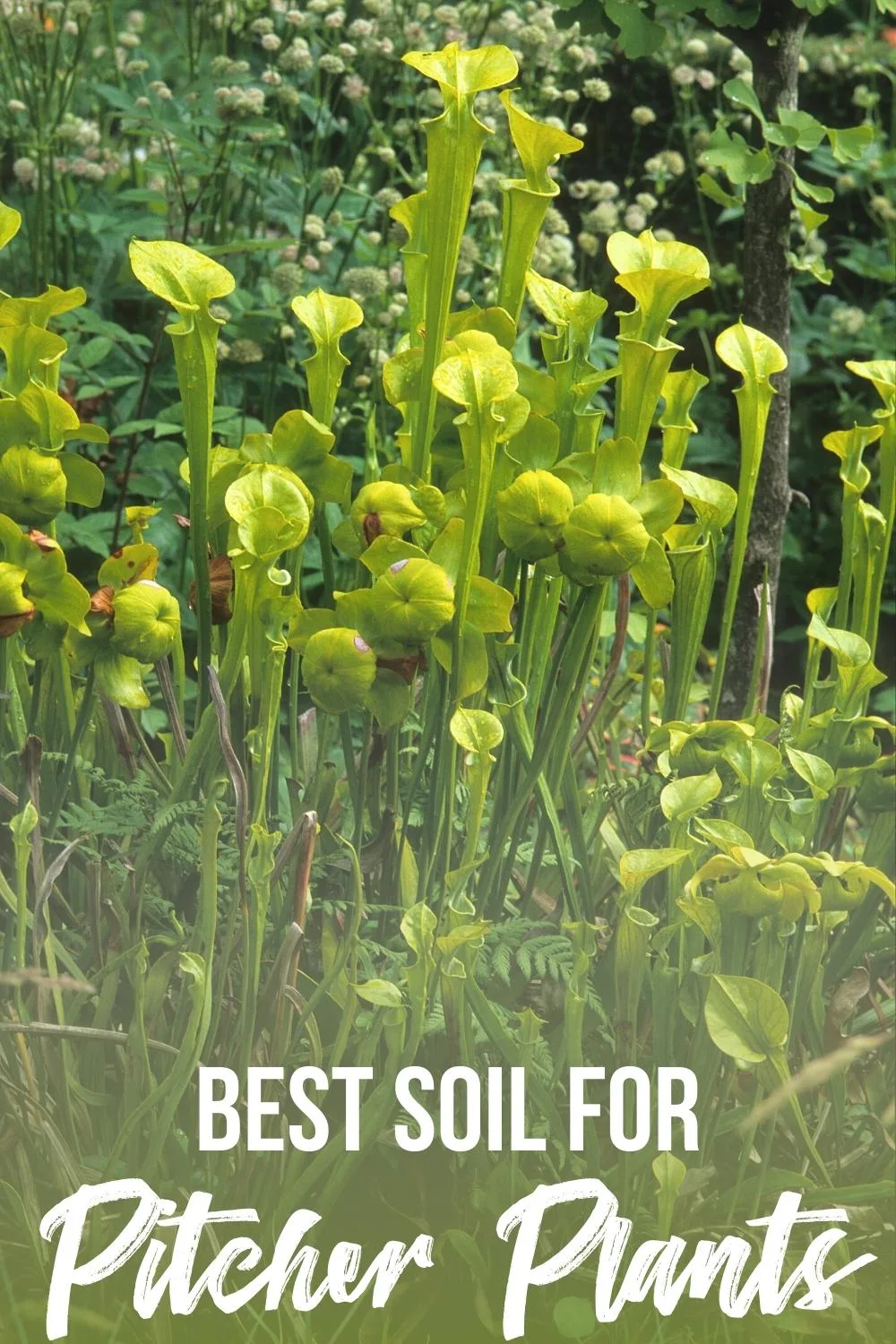
Nepenthes pitcher plants are carnivorous plants that trap insects in a cavity filled with digestive enzymes. Bugs fall into the liquid at the bottom of the pitcher and can't climb up the sides due to the slippery walls. The insect eventually drowns and is dissolved by the enzymes.

In their natural habitat, Pitcher Plants grow in wet bogs with soil that is low in nutrients. They are able to survive in nutrient-poor soils because they have evolved to digest insects to supplement the nitrogen in their diet.

To replicate its natural environment at home, you need moist soil with low mineral content and plenty of bright light. Unless you already have a swamp in the backyard, your best bet is to create a carnivorous bog garden in a container. This will allow you to control the soil mixture and mineral-free water that pitcher plants need to survive without adversely affecting the rest of your garden.
This post contains affiliate links for your convenience. Purchases made through these links may earn me a small commission at no additional cost to you.
Pitcher Plant Soil Requirements
The best pitcher plant soil mixes three parts sphagnum peat moss to one part perlite and one part horticultural sand. This mix of peat moss and coarse sand will retain the high humidity required while preventing the soil from compacting over time.
Check the labels if you're mixing your own pitcher plant soil. If there's added fertilizer in the peat moss or salt in the sand, you could harm the plants in your bog planter. You can also buy premade carnivorous plant soil to avoid these problems.
It's a good idea to combine all the ingredients in a separate container from your planter bowl. This will allow you to spread a layer of horticultural charcoal or orchid bark at the bottom of the planter first. This absorbs impurities and keep the standing water from getting stinky over time.
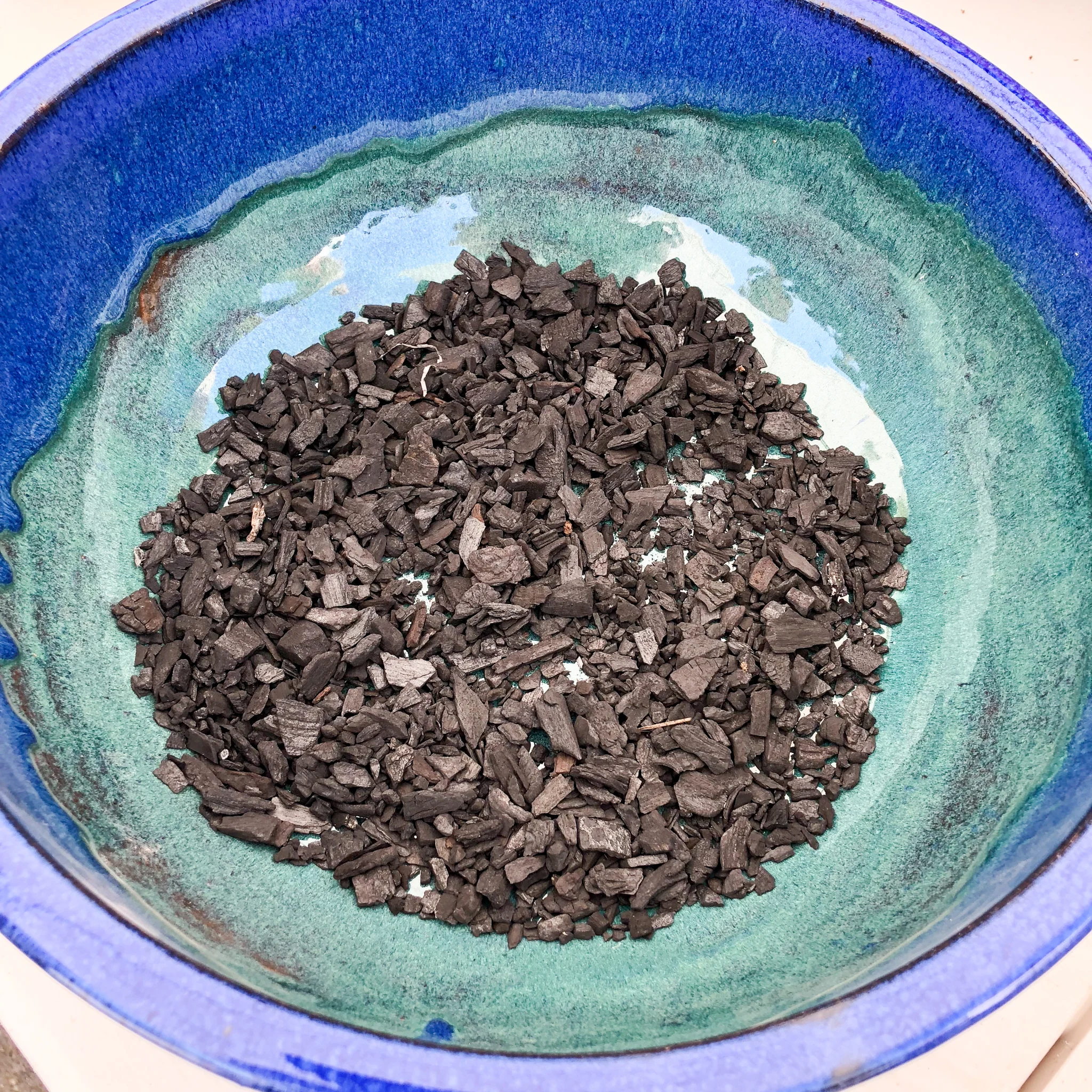
Pitcher plants don't like their roots to be handled, so decide on their spot in the planter beforehand and commit to it. Plant the root ball a little high in the soil, so water doesn't pool at the base and cause it to rot.
After your plants are in place, add a few small rocks to the top of the soil away from the base of each plant. This will prevent it from washing away after a heavy rain, and also keeps it from drying out too quickly.

Pitcher Plant Pots and Containers
In order to keep the wet soil from draining too quickly, choose a container without drainage holes. The best pots I've found for indoor pitcher plants are made for water plants, which have a low bowl and glazing on the inside to keep moisture from seeping out. You could also use plastic pots and containers with a solid bottom.
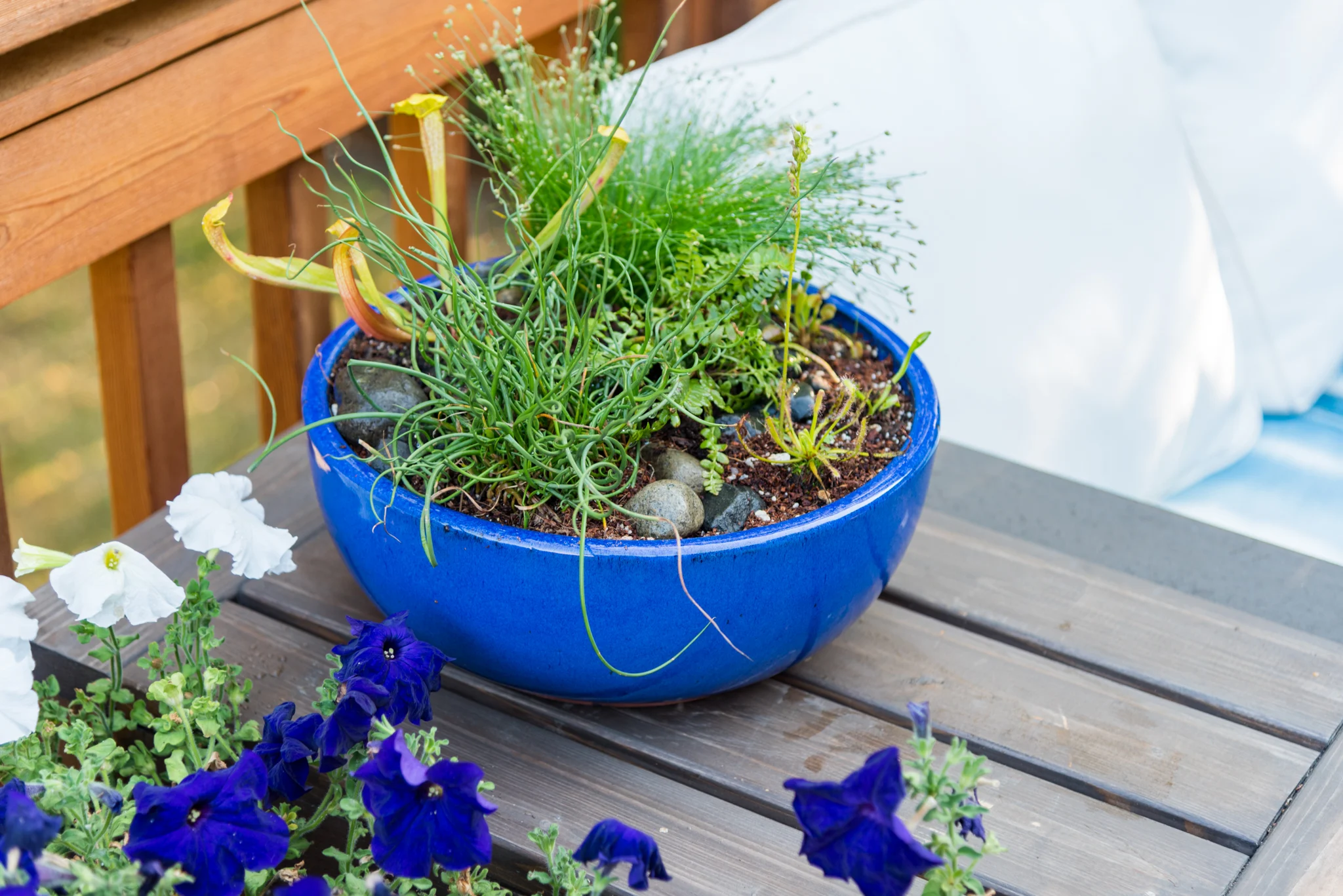
These smaller containers make it easier to move your plants from one spot to another as the light conditions change. If you live in a colder climate, move the pot to a sunny indoor location over the winter months and bring it back out in the summer.
Watering Pitcher Plants
As a general rule, you never want a pitcher plant's soil to dry out. Peaty soils retain moisture, but warm temperatures can cause the water to evaporate from a container quickly. Keep the soil damp, but not so wet that it leaves large puddles on the surface.
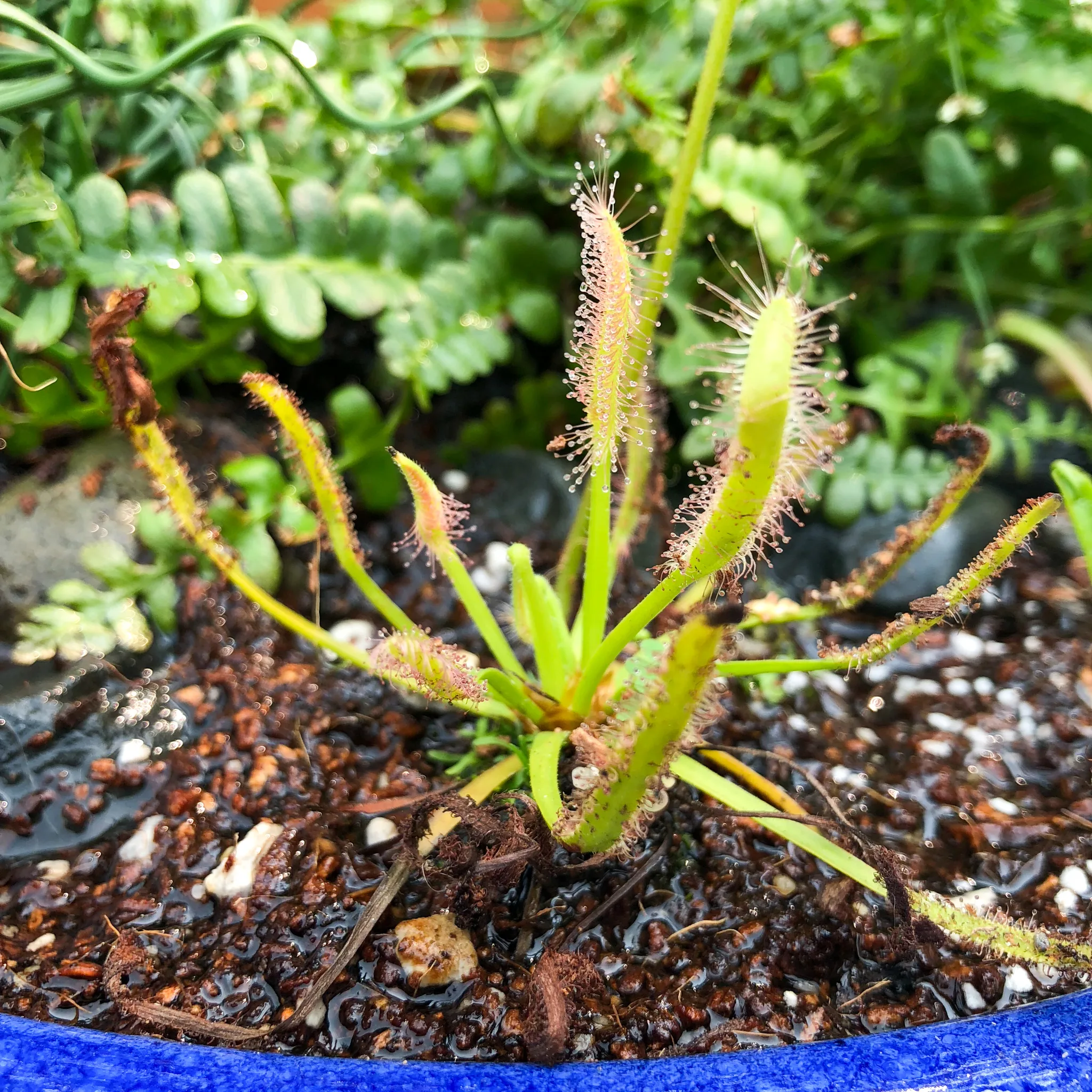
Outdoor pitcher plants rely on rain water, but pots dry out faster than native soils. You can use water collected in rain barrels, or distilled water from the grocery store. Do not use regular bottled water or tap water, which have minerals and chlorine that can kill carnivorous plant species.
Best Companion Plants for Pitcher Plants
There are several different species of pitcher plants and other carnivorous plants that would be a good choice for your bog planter. When choosing companion plants, make sure that they have the same soil and humidity preferences, and prefer direct sunlight.
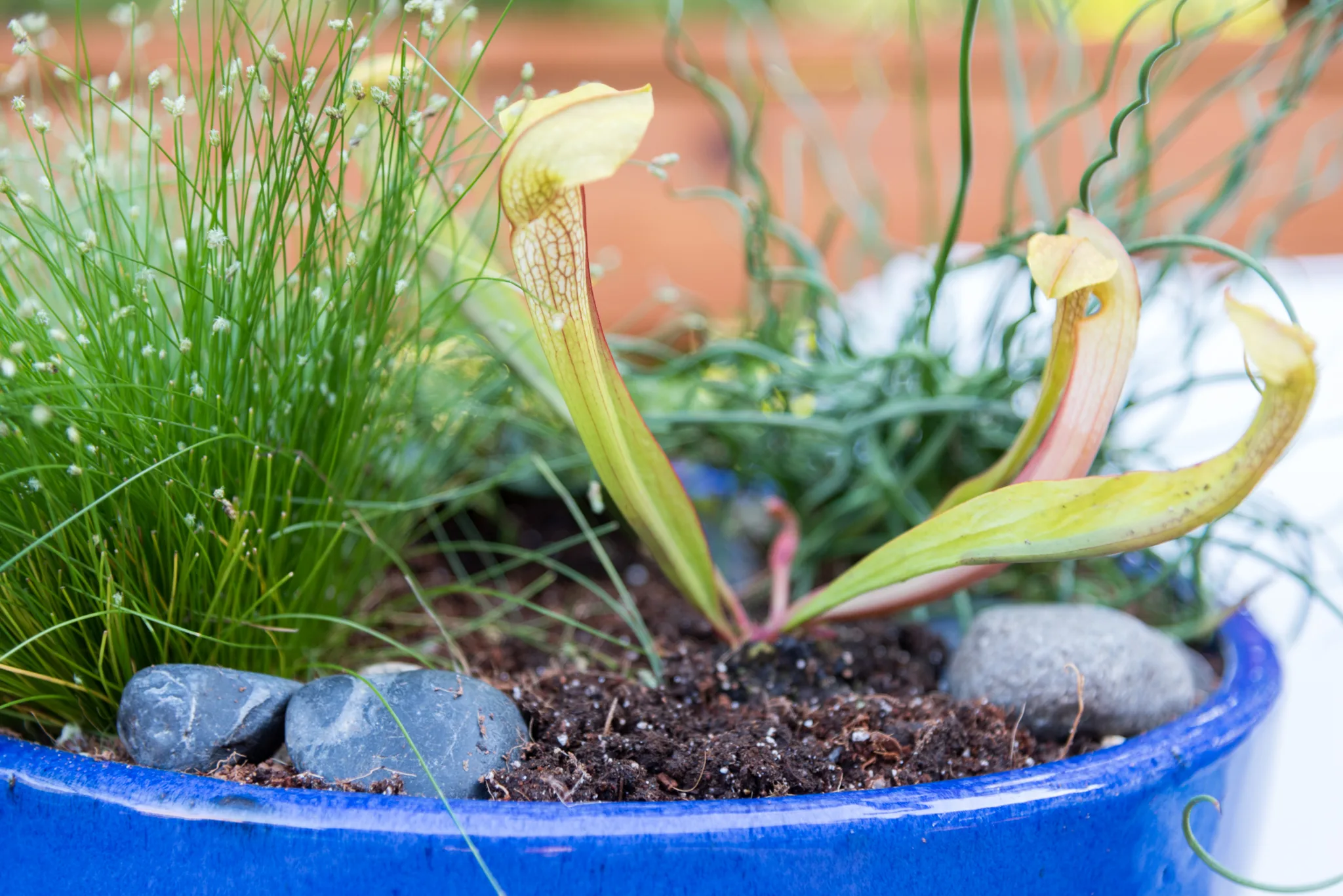
The most common companion plant for pitcher plants is a Venus Flytrap. These fascinating plants snap shut when an insect lands on its jaws. Other good choices include Sundews and Cobra Plant.
You can also add other water-loving plants such as Fiber Optic grass, curly Juncus effusus, and Alpine Water Fern. This will give your bog planter another texture and provide a spot for insects to hang out before their inevitable doom!
